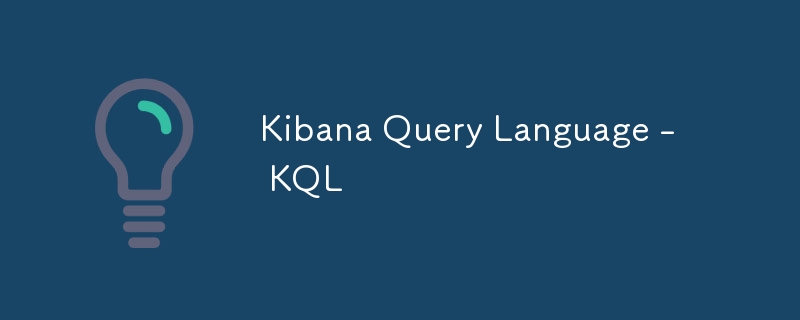Kibana Query Language - KQL
- DDDOriginal
- 2024-08-13 15:54:40927browse
Kibana Query Language (KQL) enables filtering and searching vast datasets. Despite its limitations in querying non-Elasticsearch sources and complexity, KQL offers various workarounds and complements Kibana features like visualizations and dashboards

How can KQL be used to filter and search large datasets in Kibana?
KQL is a powerful language for filtering and searching large datasets in Kibana. It provides a wide range of operators and functions that allow users to narrow down their search results to specific fields, values, or patterns. For example, a user could use the following KQL query to find all documents that contain the term "error" in the "message" field:
<code>message:"error"</code>
KQL can also be used to combine multiple search terms and operators to create more complex queries. For example, the following KQL query would find all documents that contain the term "error" in the "message" field and were created after a specific date:
<code>message:"error" AND timestamp:>2020-01-01</code>
What are the limitations of KQL, and how can they be overcome?
KQL is a powerful language, but it does have some limitations. One limitation is that KQL can only be used to query data that is stored in Elasticsearch. This means that if you have data stored in other sources, such as a relational database or a NoSQL database, you will need to use a different tool to query that data.
Another limitation of KQL is that it can be complex to learn. The language has a wide range of operators and functions, and it can be difficult to remember all of them. However, there are a number of resources available to help you learn KQL, such as the Kibana documentation and online tutorials.
How can KQL be combined with other Kibana features, such as visualizations and dashboards, to provide deeper insights into data?
KQL can be combined with other Kibana features, such as visualizations and dashboards, to provide deeper insights into data. For example, you could use a KQL query to filter a visualization to show only the data that is relevant to your analysis. You could also use a KQL query to create a dashboard that shows multiple visualizations of the same data, each filtered to show a different aspect of the data.
By combining KQL with other Kibana features, you can create powerful visualizations and dashboards that can help you to quickly and easily identify trends and patterns in your data.
The above is the detailed content of Kibana Query Language - KQL. For more information, please follow other related articles on the PHP Chinese website!

